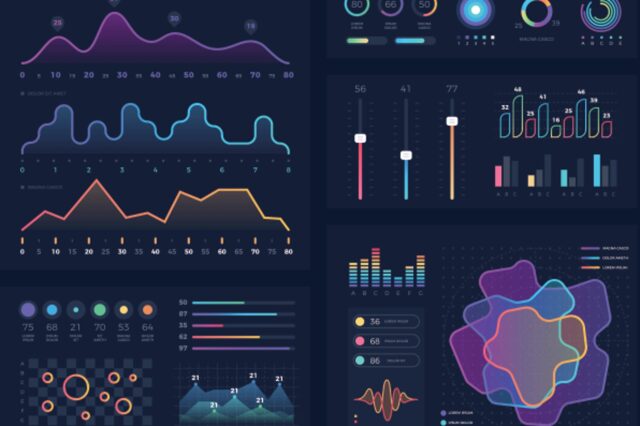Organizations are an integral part of today’s society. It is a group of people who work in an organized way to achieve specific goals. In modern business conditions, organizations should be viewed as open systems. They must be ready to respond extremely quickly and efficiently to all changes in the environment – and respond to market demands faster than the competition. Therefore, there is a need for extremely efficient, flexible, and dynamic organizational structures. That’s why today, it is necessary to use modern organizational seeds. What is their advantage – we will try to explain in this text.
Organization: The Biggest Business Challenge Of Today

In modern business, information is a key resource that generates a competitive advantage. However, defining information as an organization’s resource, or as a commodity in a market, is very difficult. The ability and speed of learning information directly affect business decisions – and thus the betterment of the organization.
The need for speed of learning information but also its understanding is an extremely desirable option. The information stored in databases and data warehouses is thus displayed in some simple visual form – because it provides a far clearer view than a numerical tabular display. That visual form is an organizational chart.
Good Organization And Necessity Of Data Visualization
Numerous software business solution vendors have recognized the need for data visualization – so they have incorporated visualization functionality through dashboards into their business systems. With the further development of business systems, visualization has become one of the more important functionalities to eventually develop special tools – that serve exclusively for data visualization.
Data Visualization Tools

Data analytics has been moved from higher levels of management to the operational level – which emphasizes the simplicity and intuitiveness of using these tools. Their benefits can be seen through a prism of:
- Functionalities
- Availability
- Subjective utility metrics
- Objective utility metrics.
Data visualization tools must satisfy experts in data analysis, but also end-users – so they have a high number of functionalities. Applications with a multitude of functionalities are usually complicated to use. Therefore, according to zenflowchart.com – it is recommended to use the simplest possible tools, that is, applications or online software. Their efficiency is more than enough for a good business organization, and they will not confuse you too much with their complicated features.
Using Flowcharts In Business Organization
The flowchart provides an illustration that shows the steps required to resolve the issue. It can show the critical points where the user has to make a decision between several steps and also provide a clear example of the beginning and end of the process – illustrating the order in which the user performs each step.
Benefits To Using Organizational Charts

We use them almost every day: tables and charts represent a significant part of business communication. From Business Intelligence systems, through managerial reports to PowerPoint presentations. Using charts and tables, we try to show the complex and dynamic world of business.
Most of us have learned to use tools like Excel and PowerPoint – but does technical knowledge alone help us communicate better? Do we organize our work better? No. It can only be a combination of communication skills and technical expertise – which can lead to professional chart and table design. And what are the benefits of using organizational charts? Here are some.
1. Defining the problem

Flowcharts divide the problem into easily defined parts. According to zenflowchart.com, the process defined by the flowchart shown shows a method of solving a complex problem. This reduces the likelihood of omitting the step needed to solve the problem because it seems obvious.
2. Diagrams have wide application
Flowcharts are visual diagrams or process maps. A good flow chart gives a step-by-step description of the process using standardized symbols connected by lines and arrows that illustrate the relationships between the steps. Flowcharts are not just for computer developers. They are useful tools for business management, from accounting processes and production systems to supply and delivery processes. Creating accurate flow charts can be a lot of work, but the benefits make it worth the time and energy.
3. Summary information

Users can provide large amounts of information using flowcharts. Many pages of text or minutes of speech may be needed to explain the relationship between different items without using flowcharts. It can contain additional elements such as colors to add additional information to a single image, etc.
4. Documentation and compliance
An important advantage of flowcharts is that they provide process documentation. This is useful when problems occur because flow charts allow you to monitor the process from one step to another. This way you can easily recognize when a problem has occurred. The flowchart also guides executives who oversee the business and helps ensure compliance with policies and regulations. For example, managers may provide a flow chart of accounting procedures – to confirm that accounting activities are carried out according to generally accepted accounting principles.
5. Efficiency Increasing

This is one of the key advantages because it shows each step will require you to complete the procedure. The opinion of some technology experts is that a flowchart will help a designer to eliminate all unnecessary steps or mistakes. This will include those steps which are required to reach the endpoint of the whole procedure.
Bottom Line
The graphs allow us to visually present the main conclusions of our data analysis. Working with them is not always easy, although it may seem so to us. It takes a lot of practice to know where everything is – but also to gain a sense of effective and professional charts. However, once you master them – everything becomes much easier.
It sometimes seems that the market has not yet fully recognized the advantage provided by adequate processing data generated by day-to-day operations. Given that the entire industry is not fully recognized – it is logical to conclude that the visualization of data as a form of business reporting is not understood as a system that creates added value. Yet, large business companies know that there is a future in their use. Therefore, the number of new users of various tools, which include graphs and flowcharts, is noticeable.







